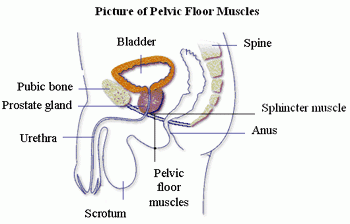Pelvic Floor
Find your care
Trust our world-renowned prostate cancer experts to deliver your care.
For more information, connect with a prostate cancer care specialist at 310-794-7700.
Pelvic Floor Exercises for Prostate Cancer Patients
Pelvic floor exercises for men – what you should know
Pelvic floor exercises for men can strengthen the pelvic floor muscles which can help improve bladder control after prostate cancer treatment. Once they are learned, they can be done anytime and anywhere.
How to do a pelvic floor exercise
- Identify the right muscle. To find your pelvic floor muscle you can:
- Try to stop your urine flow midstream
- Tighten the muscle that stops you from passing gas or having a bowel movement
- Focus on your technique. Once you have identified the pelvic floor muscle you can do the exercises sitting and standing, though you might find laying down to be the easiest position at first. Lay down and start by breathing. For several breaths, watch your belly rise as you breathe in and fall as you breathe out. Next, take a nice easy breath in, then gently contract your pelvic floor muscle as you breathe out, holding the contraction for the time it takes you to release your air naturally. Then try it a few times in a row… Inhale and relax, exhale and contract.
- Center on your pelvic floor muscle. As you work on the exercises, remember to contract only your pelvic floor muscle. Be careful not to hold your breath or tighten the muscles in your belly, buttocks or legs.
- Reps and sets. Work up to 10 contractions in a row, and have a goal of doing 6 sets of 10 throughout each day in different positions.
When to do pelvic floor exercises

It is a good idea to make pelvic floor exercises a part of your daily routine before your prostate cancer treatment begins. It is also a good idea to get on a schedule and do the exercises at the same times each day prior to surgery, so you make it a habit. For example:
- Do a set of exercises every time you do a routine task, such as eating a meal.
- Put a sticky note on your bathroom mirror to remind you to do a set every time you brush your teeth.
- Contract your pelvic floor muscle prior to and during activities such as standing up, coughing, sneezing, laughing and lifting.
After surgery you may have a catheter. Do NOT do pelvic floor exercises when you have a catheter. You may resume doing your exercises as soon as the catheter is removed.
What to expect from pelvic floor exercises
If you do your pelvic floor exercises regularly you can expect to see some results within a few weeks to a few months. Most men gain control of their urine leakage within 9 to 12 months after their surgery, but each man’s healing time is different. Research shows that making pelvic floor exercises a part of your daily routine can help.
What to do when you need more help with your pelvic floor exercises
If you are having difficulty doing pelvic floor exercises, your doctor can refer you to a pelvic health physical therapist who can help you learn how to isolate and strengthen the correct muscles. The pelvic health physical therapists at UCLA may use biofeedback and rehabilitative ultrasound among other modalities to help you use your pelvic floor muscle optimally.